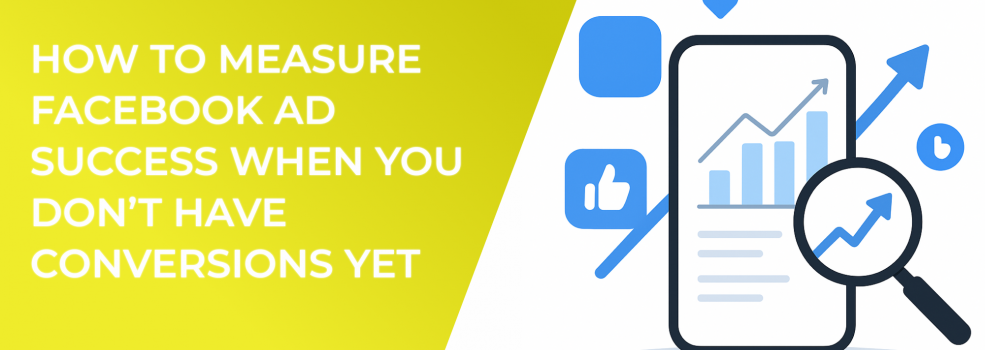Starting a new Facebook campaign can be nerve-racking. Your pixel is firing and spend is climbing, yet conversions still read “0.” Success is measurable long before the first purchase. Every impression, click, and scroll produces signals you can read, refine, and scale. Below you’ll learn which Facebook ad performance metrics matter most in the pre-conversion phase and how practical Facebook ad optimization turns early signals into profit.
1 Redefine Success for Week One
During the first seven to ten days your ads have one job: capture qualified attention at an affordable price. Judge success by the quality and cost of engagement, not by sales alone. Ask yourself three questions before adjusting budget or creative:
-
Are the right people seeing and interacting with my ads?
-
Am I paying a sustainable rate for each action?
-
Do clicks translate into on-site behaviour such as scroll depth, time on page, or email sign-ups?
If you can answer “yes,” your campaign is healthy even with zero purchases.
2 Focus on Five Pre-Conversion Metrics
New advertisers often drown in data. Keep decision-making simple by monitoring the five metrics that reliably predict conversions.
*Benchmarks shift by industry, season, and geography. Use them as guides, not rules.
These metrics capture scale, relevance, cost, and intent — four pillars of strong Facebook ad performance. If any pillar crumbles, conversions will struggle later.
3 Feed the Algorithm With Micro-Conversions
Waiting for 50 purchases to exit the learning phase can take weeks. Instead, fire lightweight events — Landing Page View, ThruPlay, or 30-second site timers — and optimise for them. The algorithm learns faster, and you see progress even when sales are slow.
Early micro-conversions are the fuel that drives future look-alikes and retargeting pools.
4 Blend Quantitative Data With Real-World Feedback
Metrics outline the picture; comments and DMs add colour. Ten “How much does this cost?” replies often signal stronger buying intent than a three-percent CTR and silence. Add the columns Quality Ranking and Engagement Rate Ranking in Ads Manager; an “Above Average” flag here often leads to cheaper impressions before conversions appear.
5 Know When to Tweak and When to Wait
Act too soon and you reset learning; act too late and you waste budget.
Wait for roughly 50 meaningful events per ad set — clicks or micro-conversions — before rewriting headlines or pausing ad sets. Patience protects promising ads from premature death.
6 Turn Engagement Into Conversions
Once you collect a few hundred quality interactions, build warm audiences:
-
Video viewers (25%, 50%, 75%)
-
Post engagers
-
Landing-page visitors with > 45 s time on site
Next, launch small-budget retargeting ads that reach these users daily, create 1% lookalikes from the strongest engagement events, and keep your five-metric audit on a weekly cadence. Warm traffic converts two to three times better than cold traffic, speeding you toward positive ROI.
Key Takeaways
• Success is measurable before the first sale.
• Monitor scale, relevance, cost, and intent through the five core metrics.
• Micro-conversions speed learning and build future look-alikes.
• Blend quantitative metrics with qualitative feedback for full context.
• Iterate methodically — fix the weakest link, then scale when the data says “go.”
Master these checkpoints and you’ll turn uncertainty into confident decision-making—so when conversions finally flow, you’ll already know why they happened and how to produce many more.

